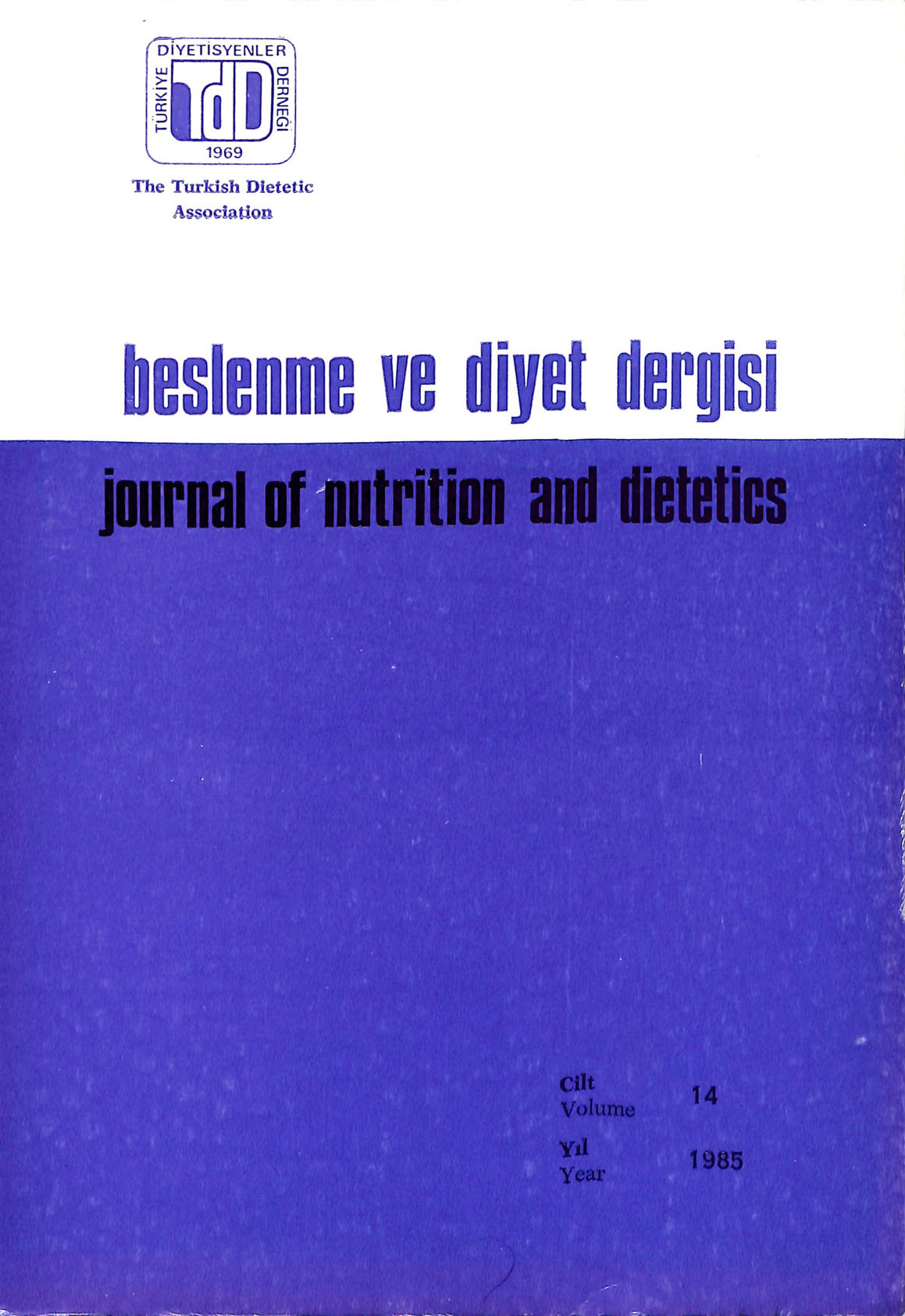Food Habits of Pregnant and Lactating Women and Their Relations to Maternal Health and Child Mortality
Keywords:
gebeAbstract
A total of 643 pregnant and 786 lactating women from cities, several neigboring small towns and villages of Afyon, Trabzon, Gaziantep, Erzurum and several villages from Çubuk and Kayseri - Yeşilhisar were surveyed to find out the relation between food habits and maternal health and child mortality. In general, 56.9 % of pregnant and 71.6 % of lactating women made no change in their diets during pregnancy and lactation. More than htilf o f the women expressed that some foods were good for these conditions. These foods were mainly milk and milk Products, meats and eggs. Majority of pregnant, and lactating women believed that some foods 'vvere not good fo r pregnancy and lactation. Most important of such foods were desserts, pastry, salty and spicy foods during pregnancy; such vegetables as cabbages, onions, garlic, eggplant, leak and spicy foods during lactation. Milk and yoghurt were consumed daily or every other day by 76.4 ,% of pregnant and 75.2 % of lactating women,while 41.2 % of pregnant and 32.4 % of lactating women consumed meat and meat products daily or every other day. In general the percentage of women who lost one or more preschool age children was found to be 25.8 %. This was 43.7 % in Erzurum, 35.1 % in Gaziantep, 21.4 % in Afyon, 9.0 % in Trabzon, 14.4 % in Çubuk Villages and 20.0 % in Kayseri Villages. 47.2 % o f these children died before they were 3 months old, 22 0 % betvveen 4 -6 months, 12.3 % between 7 - 9 months and the rest of them after 10 months or later. 25.5 % o f pregnant and 28.6 '% of lactating women had health problems. A significant invers relation was found betvveen freqency use of milkyoghurt, meats and eggs and health status of women (p<0.05). Same types of relations were found between frequency use of same foods and rate of child mortality. Further more regional variations in child mortality were found to be important, while living in villages - small towns or cities made no difference. It is concluded that in order to decrease the child mortality, some preventive measures should be taken to improve the nutritional status of pregnant and lactating vvomen.

